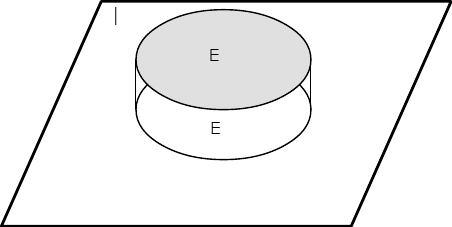| << Chapter < Page | Chapter >> Page > |
Thus each B i is the set of those elements of A i not in any of the previous members of the sequence.
This representation is used to show that subadditivity (P9) follows from countable additivity and property (P6) . Since each , by (P6) . Now
The representation of a union as a disjoint union points to an important strategy in the solution of probability problems. If an event can be expressed as a countable disjointunion of events, each of whose probabilities is known, then the probability of the combination is the sum of the individual probailities. In in the module on Partitions and Minterms , we show that any Boolean combination of a finite class of events can be expressed as a disjoint union in a manner that often facilitates systematic determination of the probabilities.
One of the most useful tools for dealing with set combinations (and hence with event combinations) is the indicator function I E for a set . It is defined very simply as follows:
Remark . Indicator fuctions may be defined on any domain. We have occasion in various cases to define them on the real line and on higher dimensionalEuclidean spaces. For example, if M is the interval on the real line then for each t in the interval (and is zero otherwise). Thus we have a step function with unit value over the interval M . In the abstract basic space Ω we cannot draw a graph so easily. However, with the representation of sets on a Venn diagram, we can give a schematic representation, as in [link] .

Much of the usefulness of the indicator function comes from the following properties.
The following example illustrates the use of indicator functions in establishing relationships between set combinations. Other uses and techniques are established in the module on Partitions and Minterms .
Suppose is a partition.
VERIFICATION
Utilizing properties of the indicator function established above, we have
Note that since the A i form a partition, we have , so that the indicator function for the complementary event is
The last sum is the indicator function for .
The class of events plays a central role in the intuitive background, the application, and the formal mathematical structure. Events have been modeled as subsets of the basic space ofall possible outcomes of the trial or experiment. In the case of a finite number of outcomes, any subset can be taken as an event. In the general theory, involving infinite possibilities, there are some technical mathematical reasons for limiting the class of subsets to beconsidered as events. The practical needs are these:
A simple argument based on DeMorgan's rules shows that if the class contains complements of all its sets and countable unions, then itcontains countable intersections. Likewise, if it contains complements of all its sets and countable intersections, then it contains countable unions. A class of sets closedunder complements and countable unions is known as a sigma algebra of sets. In a formal, measure-theoretic treatment, a basic assumption is that the class of eventsis a sigma algebra and the probability measure assigns probabilities to members of that class. Such a class is so general that it takes very sophisticated arguments to establish the factthat such a class does not contain all subsets. But precisely because the class is so general and inclusive in ordinary applications we need not be concerned about which sets are permissible as events
A primary task in formulating a probability problem is identifying the appropriate events and the relationships between them. The theoretical treatment shows that we may work withgreat freedom in forming events, with the assurrance that in most applications a set so produced is a mathematically valid event. The so called measurability question only comes into play in dealing with random processes with continuous parameters. Even there,under reasonable assumptions, the sets produced will be events.

Notification Switch
Would you like to follow the 'Applied probability' conversation and receive update notifications?